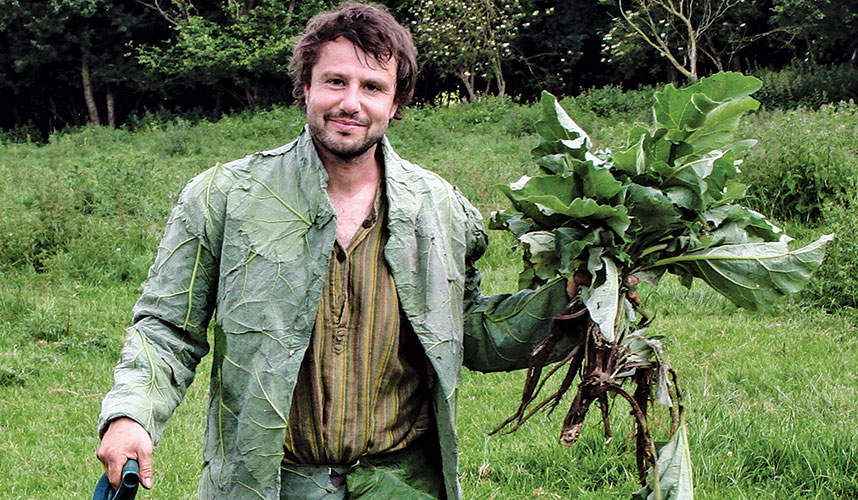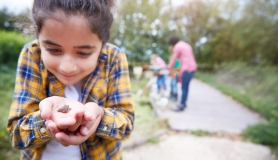In his teens, he spent two years training as a chef, eventually combining his love and knowledge of wild plants and being outside in exploring the unique flavours and textures of those plants in the kitchen. He now runs Kent-based courses in foraging.
‘There are clear benefits to sourcing some of your food from the wild – eating fresh, free food of course, but also you’re out amongst nature whilst collecting it, you have to think creatively how best to cook it, you are more highly attuned to the cycles, seasons and rhythms of the natural world, it keeps you fit and you make new friends. Once you relate to the wealth of plants around you, you become deeply rooted to the area in which you live, value it, and take responsibility for it. I think it is easy to take the world around us for granted, to think we know all about it, and to lose sight of the extraordinary hidden in the mundane. After all, what could be more ordinary than weeds! However, searching for, utilising and getting creative with wild plants opens up a whole new world of discovery; it provides a great excuse to amble about woods, fields and coast line, to nose about in hidden places and to keep fit along the way.
I have experimented with trying to live entirely on wild foods – mostly plants, for a whole year twice now, and in total I’ve managed five months. On both occasions I felt absolutely wonderful – especially mentally. When all you are eating is wild food, almost everything is the most delicious thing, because you appreciate it so much. Still, one fruit I can eat without stopping or pausing for breath as the juice runs down my arms is the delicious black mulberry. The food I’m most proud of creating? A Marmite substitute made from concentrated sea buckthorn juice, concentrated birch sap syrup, cider vinegar, and sea salt.’
EAT WILD
Fergus’ top tips for family foraging
- Start right outside your back door, in the garden, using books or online help to identify common wild foods. Attend courses, either for families or for adults that will give you a fuller awareness of the potential of foraging, and leave you with the confidence to explore the possibilities with your children.
- Collect wild plant seeds and grow them to maturity. This is a really good way to see the plant throughout its growth cycle, observe natural variation, as well as changes in colour, texture and edibility.
- Creatively explore the multiple uses of just one common and abundant and easy to identify wild plant. Take stinging nettles, for example, and explore their uses: in soup, as a vegetable, deep fried, raw in smoothies and lacto-ferments, as tea, for wine and beer, vinegar, cordial, powdered and added to bread, biscuits, pasta dough and so on.
- Set yourself realistic foraging goals, for instance to familiarise yourself with say three, four, five, 10, 20 - whatever seems achievable - new fungi or plants each week/month/year, but work first and foremost with what naturally captures your attention.
- Only eat a wild plant, fungus or seaweed that you have positively identified and know to be edible and safe to use in the condition it is and in the way you have prepared it for consumption.
MORE INSPIRATION
Find recipes at: fergustheforager.co.uk







